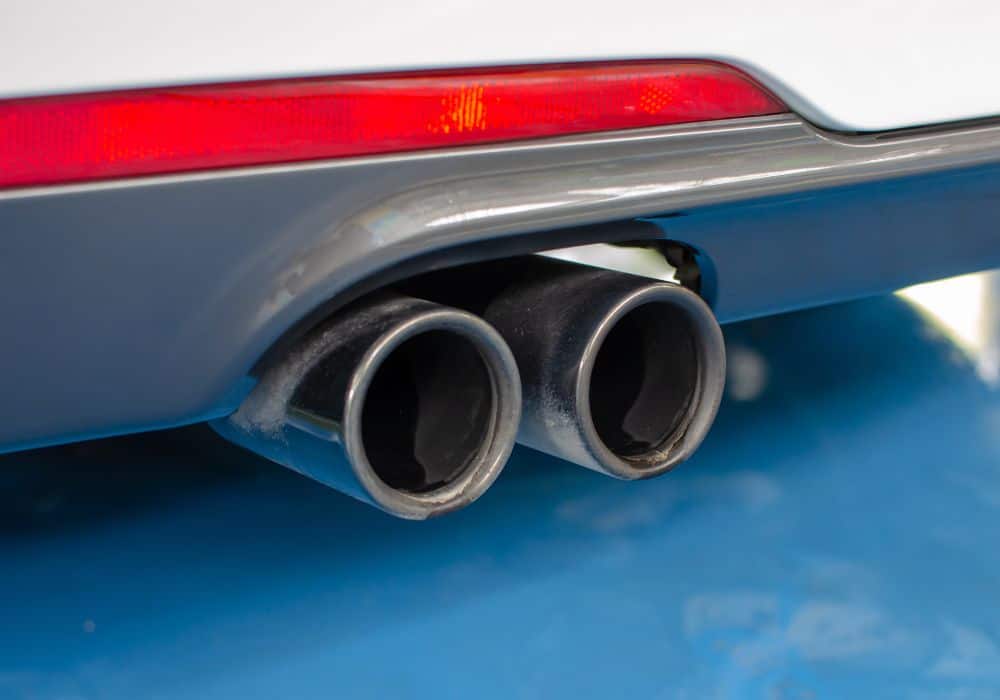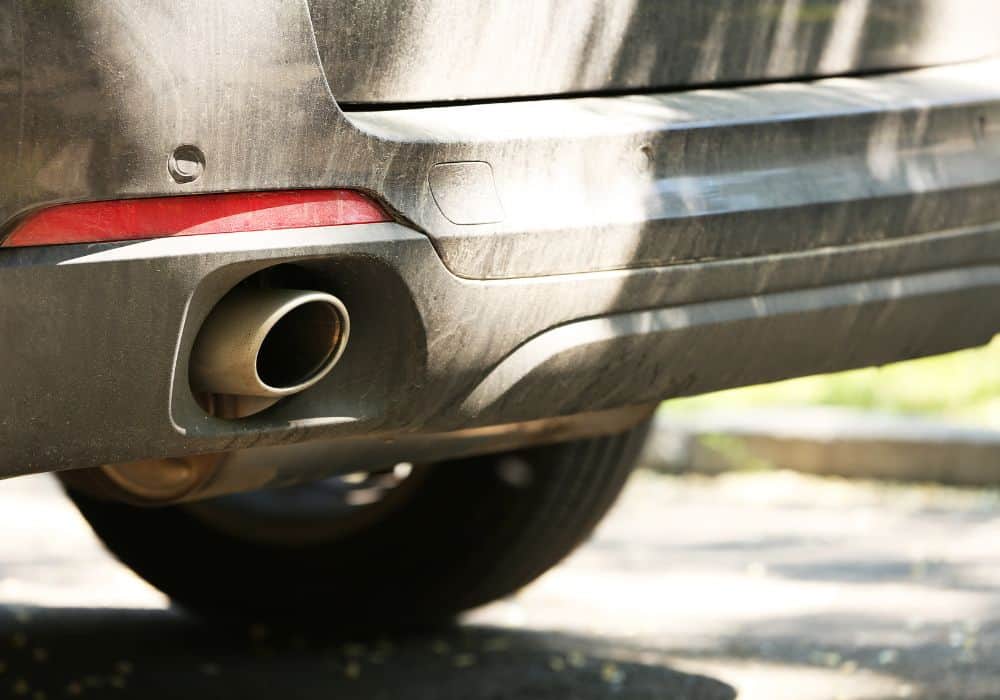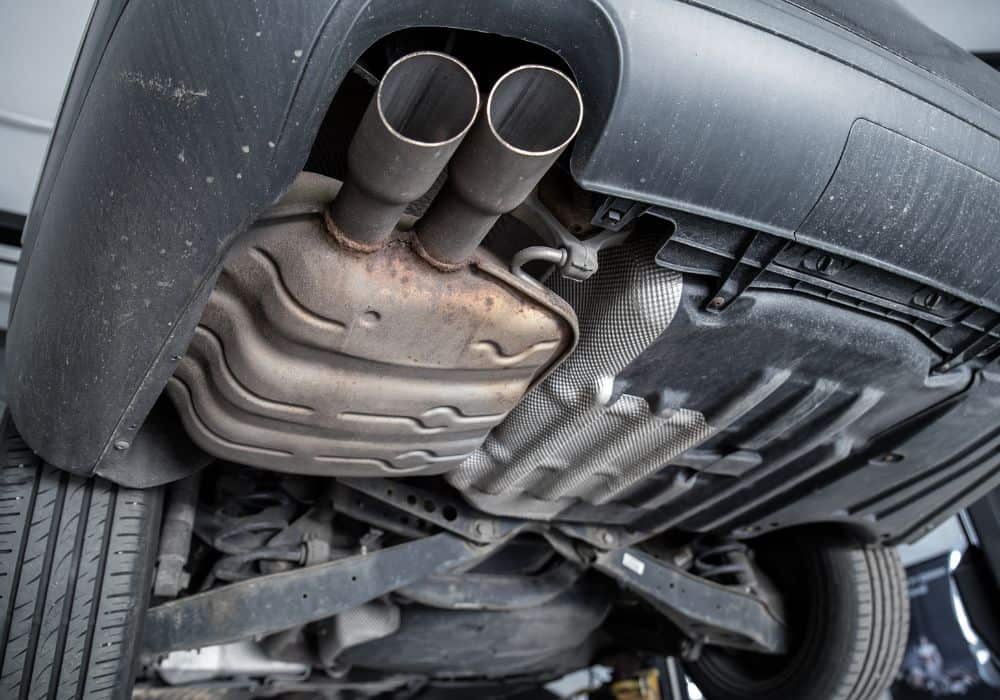So you have noticed that when you turn your vehicle on, it does not sound like it and drive as it should, and many warning lights have started to light up. A common but simple issue you should check for is an exhaust leak in your vehicle’s exhaust system.
What Is The Exhaust System in a Vehicle?
The exhaust system is a series of pipes that directs burnt gases away from the engine compartment and the vehicle’s inside. The gases result from the engine burning its fuel, be it diesel, gasoline, or LPG.
In modern vehicles, it is also one of the systems that helps the engine run cleaner by ensuring that no toxic and dirty particulates and gasses get out to the surrounding environment.
This system is unique for every model of the vehicle, but they are usually made of the same components, which are:
- Exhaust manifolds or headers collect exhaust gases directly from the engine cylinders and direct them into one pipe.
- The difference between manifolds and headers is that manifolds are usually one single cast iron part, while headers are made from welded pipes and do not immediately converge into a single exhaust pipe.
- The exhaust pipe, which connects all system parts, is usually made of rolled steel welded at the seam.
- Catalytic Converter (CAT) or Diesel Particulate Filter (DPF), which are more prevalent in modern-day vehicles, are devices used to clean or filter exhaust gas from ecologically unfriendly gasses or particulates.
- Muffler or Silencer, a device that deafens the noise emitted by the engine’s exhaust.
- Resonator, a more modern luxury and sports vehicle device, gives them a unique sound.
What Causes a Gas Leak?

The exhaust system pipes are most likely made of rolled steel sheets bent into a tube and welded at the seams. The leaks usually occur at this seam and are caused either due to rust or rough driving conditions.
Rough driving conditions, dirt or gravel road, can cause the exhaust to be punctured by a foreign object or debris, such as a stone in the street.
How do You Find Out If the Problem Is In Your Exhaust?
You should first see if your vehicle has all of the symptoms that go along with a leak in the exhaust system, which are:
- One of the common signs of an exhaust leak is engine noise that is louder than usual. Significantly while accelerating. You may also hear popping or hissing noises while the engine is running.
- An exhaust leak can also cause a noticeable loss of power when accelerating. Your engine will not have its usual responsiveness when you hit the gas, and it will continually lose power if you do not take care of the issue.
- Reduced fuel economy is also a symptom because it affects the exhaust’s backpressure, thus affecting the air-to-fuel ratio.
- If you start to smell exhaust fumes inside the passenger cabin of your vehicle, then that is also a telltale sign of a leaking exhaust
If your vehicle has all the problems mentioned above, it is time to find the leak’s location.
Another way to check is to turn the car on after the engine has cooled down, i.e., in the morning, and cover the tailpipe with your hand, do not worry. It is not hot yet and takes time to build up heat in the tailpipe.
If the tailpipe can force your hand away with the pressure from the exhaust, then you do not leak, but if you can hold your hand on it for a while before it gets too hot, and you do not feel any force pushing it away, then you most likely leak.
How Do You Locate the Leak in The Exhaust?

To locate the leak, you will need a blower that blows cold air (A leaf blower or a hairdryer with heat settings), some duct tape, and a spray bottle with soapy water. Make sure you do this on a cold, turned-off engine because you risk damaging the exhaust otherwise.
If your vehicle is relatively low and close to the ground such that you cannot look beneath it without raising it, you will have to lift it using a car jack and keep it up using jack stands; here is a relevant video on how to do that.
Step 1: You will do a visual inspection and locate any obvious cracks
Step 2: Place your blower into the exhaust tailpipe and seal it shut with duct tape so no air can escape; if your car has dual exhausts, you can place a rubber glove or other seal on the rest of the tailpipes.
Step 3: Turn on your blower and spray the exhaust with soapy water from the manifold to the tailpipe and look for bubbles.
Sometimes the leak can come from loose joints, gaskets and loose fittings between flanges so keep an eye out for those parts of the system. If that is the case, your problem might be an issue of tightening a few loose bolts.
It is important to note that the vehicle’s muffler will have a small, perfectly round hole at the end. It is designed by the factory and acts as an escape for water from the muffler.
If the cracks you have are huge or the damaged area is a crucial component, such as the muffler, CAT/DPF, or resonator, then you have no choice but to take our vehicle to the mechanic’s garage to get that issue fixed since those parts need replacing.
But if your leaks are minor, you can do all the necessary repairs without the much-added expense we might get from the mechanics’ shop.
How Do We Fix the Leaks That You find?
First, you turn your vehicle off and let the exhaust and engine cool down; this might take an hour or two.
Next, clean the affected area from dirt or debris using a metal wire brush and some steel wool. Lastly, use sandpaper to remove all the rust, so you have an excellent surface.
Next, you will rub acetone or isopropyl alcohol on this new rust-free area so that any leftover grease or muck that you cannot scratch or scrape off gets removed.
It is best that you do this prep work regardless of which of the following methods you decide you will use to fix the leak.
Method 1: Muffler Tape
Muffler tape (also known as exhaust tape) is only a temporary solution to this problem but can work in a pinch. Follow the manufacturer’s instructions on activating the muffler tape, applying it to the leak like a bandage, and ensuring there is about an inch of overlap.
You should cover several layers of tape over the leak and wrap it tightly. There should also be a metal-colored tape with the set you wrap as a final protective layer over the first tape.
After you have done all of that you turn your car on and see if everything is running correctly and let it run for 30 minutes so that the heat cures the tape properly and that should be it. Remember to wear gloves for this method, as the repair tape is quite sticky.
Method 2: Muffler Putty
Muffler putty is a special resin compound that can withstand very high temperatures. You use it by simply activating the compound according to the manufacturer’s instructions and applying it to the desired area.
A good trick to do when using this method is to attach the blower you used in the beginning so that it sucks air from inside the exhaust, causing negative pressure. Doing this will force the putty to seep deep into the crack and create a stronger bond.
If you happen to get some putty onto a spot by accident, it is not a big problem since you can remove it by spraying some soapy water and releasing it while it is still wet.
Do not start the engine again until the putty has fully cured, which should take about 24 hours, and after that period, you should be able to start the engine again without any worries.
Remember that this method cannot cover huge holes but is very useful for tiny cracks in challenging-to-reach places or on surfaces with a more complex shape.
Method 3: Exhaust Clamps

It is by far the simplest method you can use. You only have to place the clamp over the leak or hole and ensure that the clamp’s bolts are on the opposite side. Then you tighten the bolts so that it forms a tight seal around the hole.
Do not worry about the clamp rusting away. It is made of stainless steel and should outlast your exhaust assembly.
Additional tips:
- Always ensure that your vehicle has been turned off for some time to avoid getting burned. Just because the leak might be far back and away from the engine, it does not mean that that spot will not be scorching.
- Make sure that after you make any repairs take your car to a mechanics shop for an emissions test to check and see if the issue has been adequately solved.
- If the leak or hole you find in your exhaust system is on a critical part of it and is so large that you cannot fix it with any of the methods listed above, then you must take it to a mechanic and see what you can do.
Conclusion:
An exhaust leak is a common issue that causes many problems with your vehicle. Still, it can usually be fixed using a minimum amount of tools and knowledge, thus saving you precious time and money compared to taking it to a mechanics’ garage.
If you have tried any of these methods of fixing a leak in your exhaust system or have tried a different one, feel free to share your experience with us. And if you have any questions, do not hesitate to ask us whatever you wish to know.
